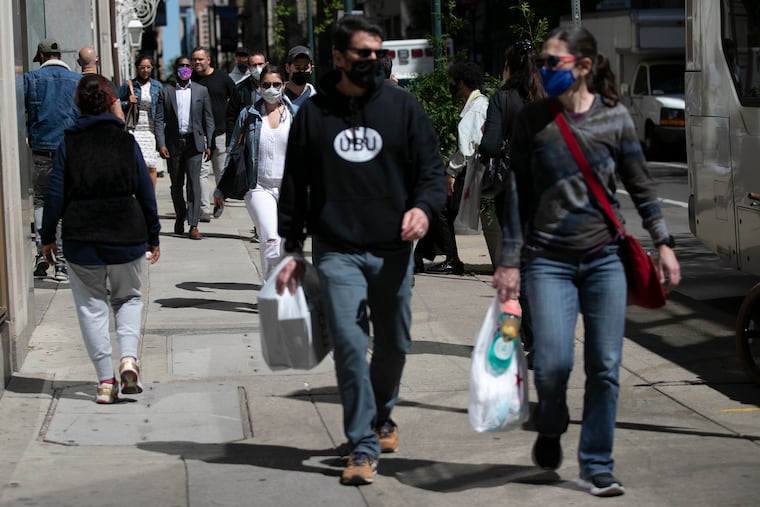As Center City shoppers shift from office workers to downtown residents, Sunday sees retail bonanza
Although Center City is less of a regional draw than it used to be, restaurants and retail are booming due to rising downtown residential population.

The pandemic fundamentally altered shopping patterns in Center City, new research from commercial real estate services firm CBRE shows, sending foot traffic on Sundays soaring as more retail demand is driven by downtown residents.
CBRE’s study also shows that Walnut and Chestnut Streets used to draw on a much larger geographic area for its customers in 2019, with 60% to 70% of visitors coming from a 2,500-square-mile radius around Center City. In 2024 that area had shrunk to 970 square miles, meaning the city has become much less of a regional draw as farther-flung residents stay closer to home more often.
But Center City’s booming population and, as important, that of its surrounding neighborhoods has made up for the diminished presence of suburbanites.
“If you live in South Philly, you’re going to go to your corner bar on a Thursday night, but for real shopping and entertainment, all roads from those neighborhoods are leading back into core Center City,” said Steven Gartner, executive vice president with CBRE’s Philadelphia office.
As a result, Center City retail is unusually healthy in comparison to other U.S. downtowns.
In another recent report comparing all of America’s largest central cities, CBRE noted that downtown Philadelphia is uniquely thriving due to its dense mixture of uses with retail, office, and residential in extremely close — if not overlapping — proximity.
Many U.S. cities have more strictly segregated uses, a legacy of many Sunbelt cities being built up after the normalization of zoning, which kept office and residential and shopping districts far apart.
“Philadelphia is unique in the fact that we have … trophy office assets, and a block away you have multifamily apartments and a block away from that you have a retail corridor,” said Joseph Gibson, director of research for CBRE’s Greater Philadelphia office. “That’s absolutely helping this [post-pandemic] transition.”
Center City began moving away from office uses and adding more residential units long before COVID-19 struck, and residential development has continued to boom over the last four years. (A further 1,300 office-to-residential units are in the pipeline.) That added customers even as many suburban commuters stopped coming to work in 2020 and then only haltingly returned post-pandemic.
That change can be seen in the most popular shopping days. Before the pandemic, on Sundays Walnut and Chestnut Streets would see an almost 20% dip in foot traffic. Now Sunday is tied with Friday as the second most popular day on those thoroughfares.
“The fact that [foot traffic] does pick up on Friday and persists through Sunday that just screams residential demand,” Gibson said. “That’s clearly not office workers.”
The mixture of uses in Center City is good for remaining offices as well. Workers are more likely to come in regularly if they can walk or bike or take a quick transit ride to work. Long commutes from, say, Trenton are not happening as much — as seen in the regional rail ridership numbers — but shorter trips for work or pleasure are still occurring.
And those residents who live in and around Center City are more likely to regularly shop and go to the office there.
“The return-to-office worker tends to live closer to, or in, Center City than the one that has to come from a much farther distance,” said Gartner, “and that’s who is going to frequent the stores in Center City more, too.”